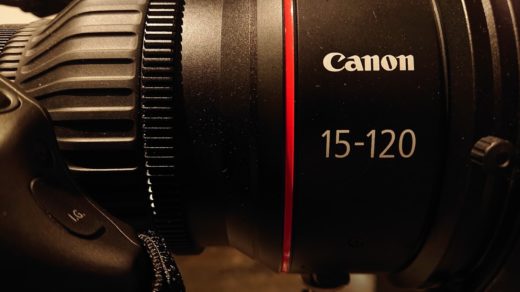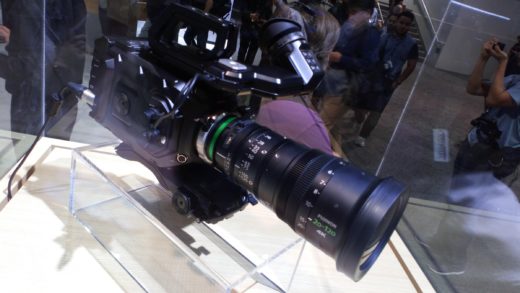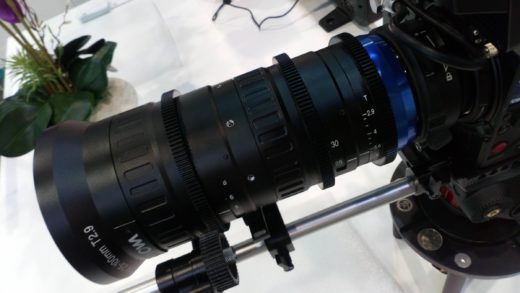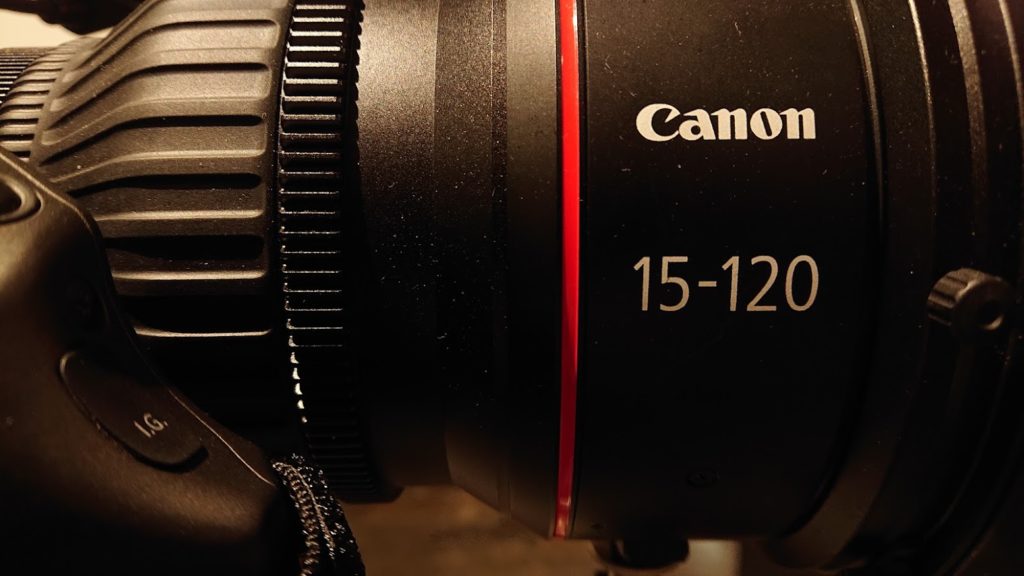
There are probably people reading this who have long enough memories to remember 20:1 zoom lenses on small-chipped CCD cameras. Some of those people will have spent the years since that was common nosing around trade shows looking for the Super-35mm equivalent only to find it doesn’t exist.
Some of us might even be the sort of steely-eyed broadcast camera people with liquid nitrogen for blood who keep hurtling baseballs in frame for a living. That’s more or less the last refuge of anyone who wants to shoot on a sensor smaller than a standard action movie sheet of glass. Still, the fact that we rarely have the option of using 2/3” sensors anymore was provoked by the soaring demand for camera performance and the resulting need for bigger chips. That’s fine, but the widespread replacement of broadcast lenses with Super-35mm options that weigh more, cost more and do less, was… well… less fine.
And now we’re facing that prospect again, with even bigger chips, but there’s a saving grace: the more directors foam at the mouth over the possibilities of full frame (so we can leverage the low noise of the big chip, shoot at ISO 3200 and f/8, and thus end up back roughly where we started for a mere double the money), the less fashionable Super-35mm zooms become. A favourite of the jobbing documentary camera operator has long been the Canon CN7x17, for instance, which replaces a common broadcast zoom on about as close to a one-to-one basis as is physically possible.
On-ramp
Nobody would have taken a 7:1 zoom that seriously in 1997, but with Super-35mm coverage, the engineering is much more difficult, which is why a CN7x17 had an MSRP of UK£22,500 at launch in 2014. New examples are 20% cheaper now, even by traditionally-inflated public figures, but what didn’t exist shortly after 2014 was a used market where they sold for half that. OK, the lens you end up with might be missing its original caps and a few flakes of paint, but they don’t go bad.

The CN7x17 ramps at the long end, so we might prefer an alternative. This market was more or less invented by Fujifilm with the Fujinon ZK4.7×19, the famous Cabrio 19-90, so-called because it was designed to operate either in a single-camera drama mode or on someone’s shoulder. The Amira option is a truly scoliosis-inducing payload for handheld work, but the results were hard to question. Of course, the Cabrio avoids the ramping encountered at the long end of the Canon by not having a long end, but the Fujifilm lens (in its second version) can go for barely more than £10,000 online (and is a hair faster overall). That’s hard to overlook.
Lightweight zooms for all
Zeiss’s 21-100mm LWZ.3 is a more recent entry which sells for a mere UK£7750 brand new, though it lacks the servo grip option of the Canon or Fujifilm. Used LWZ.3s are perhaps 25% cheaper, though that represents a smaller actual saving than on the other lenses we’ve considered, given the lower initial price. It is not blazingly fast nor does it have an enormous range (expressed in broadcast nomenclature it’s about a 4.8:1 zoom) but it is a way to get to retirement without requiring spinal surgery while still being able to shoot Super-35 4K.
Those are perhaps the three best-performing options. Canon’s CN-E 18-80mm T4.4, while popular, is not nearly so fast or wide-ranging and is not a fully mechanical lens. Sellers of used examples seem to share an overambitious assessment of their value, putting them within 25% of the used price of the less-known Canon CN-E 30-105mm T2.8. Yes, it’s only a three-and-a-bit to one zoom and lacks the wide end, but it’ll handle the majority of duties on a small drama and it bears the red ring of Canon’s L series.
For some, that’ll mean it’s too sharp, but (with searing irony) that’s a common problem in modern zooms. It’s less built for handheld work, and the huge focus rotation is less ideal under some circumstances, but the price-performance ratio is enticing.

And then there’s the new guard. Laowa has a 25-100 T2.9 and a 20-85 T4 which both sell new for less than any of the other things we’ve discussed go for on eBay. At the other end of the scale, there are perennial auctions for obscure pieces of technology of shady provenance – Russian or Chinese-made designs of the late twentieth century which are often big, heavy and probably not that sharp, even when they’ve been off to Olex for a tune-up (truly, it’s shocking how big an improvement that can make).
None of these things are really a replacement for the 17:1 broadcast zooms of old, and as we head into 2024’s trade show season, it seems unlikely we’ll see anything change, at least affordably. Almost science-fictional ideas about holographic lenses and nanostructures to guide and direct light might help, and cameras are increasingly capable of correcting lens artefacts electronically. If that can help us keep up with ever bigger chips, great. In the meantime, let’s just celebrate the fact that the dedication of fashion followers to remain at the cutting edge of full-frame camera gear is likely to leave lots of options for the rest of us.

Filmtools
Filmmakers go-to destination for pre-production, production & post production equipment!
Shop Now













